Brewing Safety: Rethinking Pesticides in India’s Tea Production
-
 Deepna Kaveriappa
Deepna Kaveriappa
- #InDepthConversations
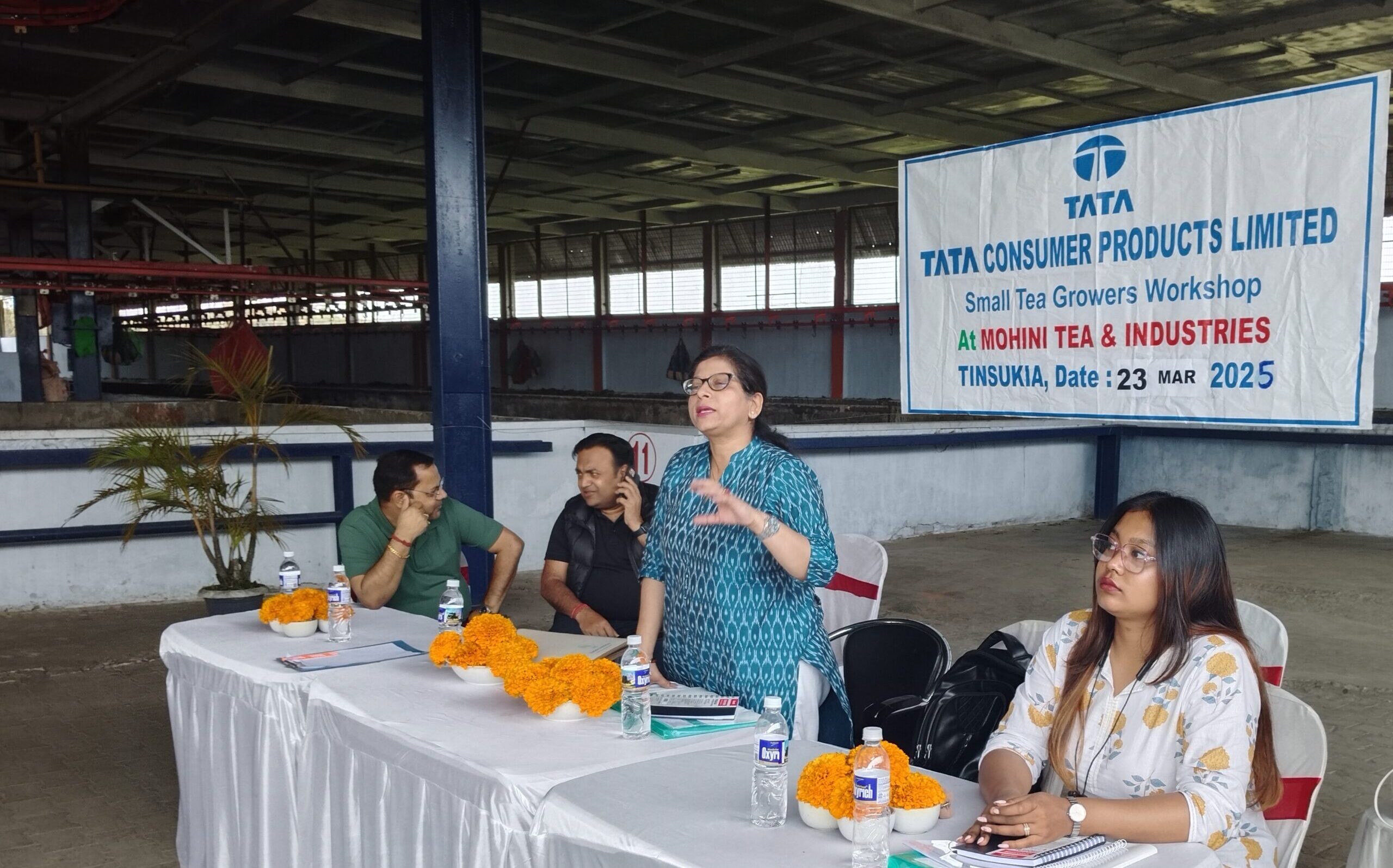
From roadside stalls in bustling cities to quiet verandahs in rural homes, tea is more than a beverage. It’s a ritual, comfort and a cultural cornerstone. Often boiled with milk, sugar, and spices, it kickstarts conversations, fuels workdays, and soothes tired minds. But please pause to know what lies beneath the familiar warmth of a cup of tea – an uncomfortable truth that this cherished drink is most vulnerable to pesticide overuse.
India has long been a global leader in tea production, with a proud legacy that intertwines deeply with its cultural heritage, agricultural livelihoods, and global trade. However, in recent years Indian tea consignments have been rejected due to residues of unapproved pesticides. The tea grower in India faces economic pressures as they struggle to balance crop protection and compliance. They are often left with two choices: either use suboptimal pesticides and risk pest damage, leading to reduced yield or use unapproved pesticides, risking compliance issues and potential rejection in domestic and export markets. As demand for tea grows and climate conditions shift, the pressure to protect yields has led many growers, the big estates as well as smallholders, to rely heavily on chemical pesticides, often at the cost of safety, sustainability, and long-term soil and plant health. Unfortunately, this has resulted in pesticide residues entering our brew, thereby compromising its quality and safety and potentially posing risks to human health.
In this Q&A, we talk with Dr Aarti Mahajan, Senior Fellow at Sankala Foundation, who brings her deep expertise in agricultural chemicals, bio-pesticides, and pest management to Sankala’s ongoing study on Pesticide Residues in Tea Leaves – Causes, Practices, and Remedies for Safe Tea Production by Small Tea Growers.
With a PhD in Agricultural Chemicals from IARI, New Delhi, and a Master’s degree from the University of Delhi, Dr Mahajan has worked extensively on pesticide formulation and phytochemical analysis. As an advisor to the study, she has travelled with the Sankala team across tea-growing regions of West Bengal and Assam—interacting with small tea growers, scientists, TRA, and factory owners to connect research and regulation with on-ground realities.
In this blog, she shares insights from the field and her reflections on what it takes to make every cup of chai safe for consumption.
1. Tea is one of the most widely consumed beverages in the world. How significant is the issue of pesticide use in tea production?
Tea is considered as a beneficial nutraceutical for human health as it is an inherent source of several bioactive substances such as polyphenols, amino acids, polysaccharides, pigments, etc. which have a significant impact on human health. Tea contains polyphenols such as catechins and their derivatives, flavonoids, gallic acid, etc. These polyphenols work as natural antioxidants. Fermented teas are rich in pigments because while fermented, catechins get oxidized to theabrownins, theaflavins, and thearubigins. These pigments show health functions such as anti-inflammation, anti- cancer, and cardiovascular protection. Polysaccharides, some alkaloids such as caffeine, amino acids along with polyphenols contribute to the health benefits of tea including anti-diabetic, anti-cancer, and anti-obesity. Now, even the US’ Food and Drug Administration (FDA) has recognised Camellia sinensis tea as a healthy beverage.
Pesticide use in tea is highly significant due to the crop’s vulnerability to pests and the economic pressure to maintain yield and quality. The tea plant is especially vulnerable to a wide range of pests such as greenfly, mosquito bug, mites, loopers and thrips more—that thrive in warm and humid plantation conditions. Unlike food crops that are harvested seasonally, tea is plucked multiple times a year, leaving little gap between pesticide application and harvest. However, excessive or improper pesticide application has led to residue levels that sometimes exceed safety standards, posing risks to consumer health including hormonal and reproductive disorders as well as causing international consignment rejections. Extensive use of chemical pesticides in agro-ecosystems has led to several negative ecological impacts that include the development of pesticide resistance in pests, pest resurgence, and secondary pest outbreaks, which is true for all the agricultural and plantation crops.
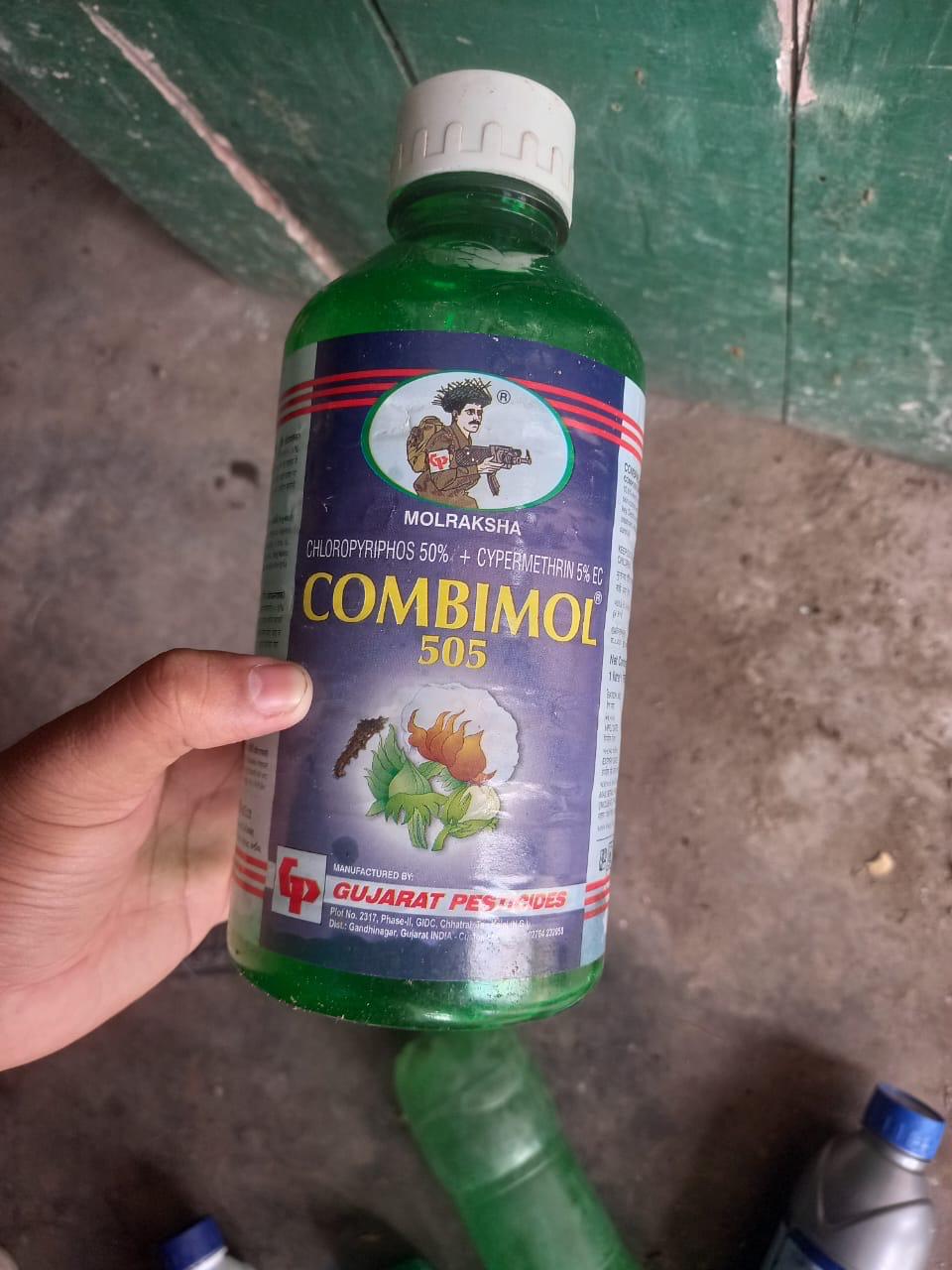

2. Are there any pesticide residues that persist even after tea leaves are processed and brewed?
Yes, while some residues degrade during processing or brewing, others can persist, especially systemic pesticides. For example studies have shown that residues from organophosphates, neonicotinoids, and other systemic pesticides can persist even after tea leaves undergo withering, rolling, drying, and brewing. This raises concerns because consumers are exposed even after the product is seemingly "cleaned" through processing.
The persistence of residues depends on multiple factors such as chemical stability, agroclimatic conditions, preharvest interval etc. Agroclimatic conditions of various tea growing regions differ a lot. Thus the process of biochemical degradation of pesticides by microbes and environmental factors are widely different. The secondary metabolites that are produced as by products and their impacts on human organs need to be studied thoroughly.
Unfortunately, there is a dearth of peer-reviewed studies on how brewing alters pesticide residues in teas. Some global studies confirm that a portion of residues leach into the brew, while others remain bound to the leaf. This knowledge gap highlights the urgent need for Indian research institutions to examine the biochemical breakdown of pesticide residues in tea, both during storage and at the consumer end.
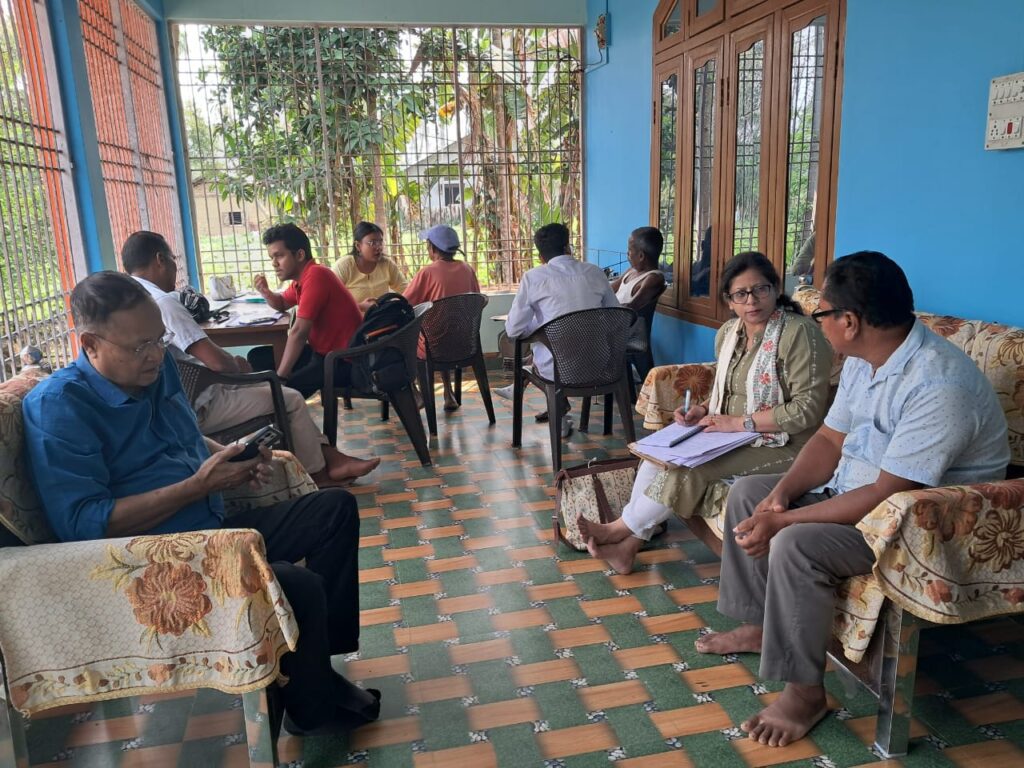
3. How do different countries regulate pesticide use in tea, and where does India stand in terms of safety standards?
Each country establishes its own national maximum residue limits (MRLS) for pesticides based on its specific agricultural practices and dietary consumption patterns for various food commodities. At International level, Codex Alimentarius Commission (CAC) have been periodically prescribing guideline documents for fixation of MRL since 1970s, based on the recommendation of FAO/WHO Joint Meeting on Pesticide Residues(JMPR) and these are being updated periodically as per scientific development, fresh experience/lesson learnt and knowledge from different countries for implementation of these procedures.
Both European Union and Japan follow very stringent MRLs, and tea consignments often get rejected if they exceed them. United States follows FDA and EPA guidelines, allowing higher thresholds than the EU but still closely monitoring imports.
In India, the food basket components for determining Maximum Residue Limits (MRLs) for pesticides are established by the Food Safety and Standards Authority of India (FSSAI). The FSSAI considers data from supervised field trials, risk analysis parameters, and toxicological data to determine these limits. To ensure the safety and quality of tea, FSSAI issued a notification in March 2024 expanding the list of pesticides prohibited for tea cultivation, requiring all notified laboratories to test for 26 banned pesticides in tea.
India is improving its standards but still lags behind in implementation, traceability, and farmer education.
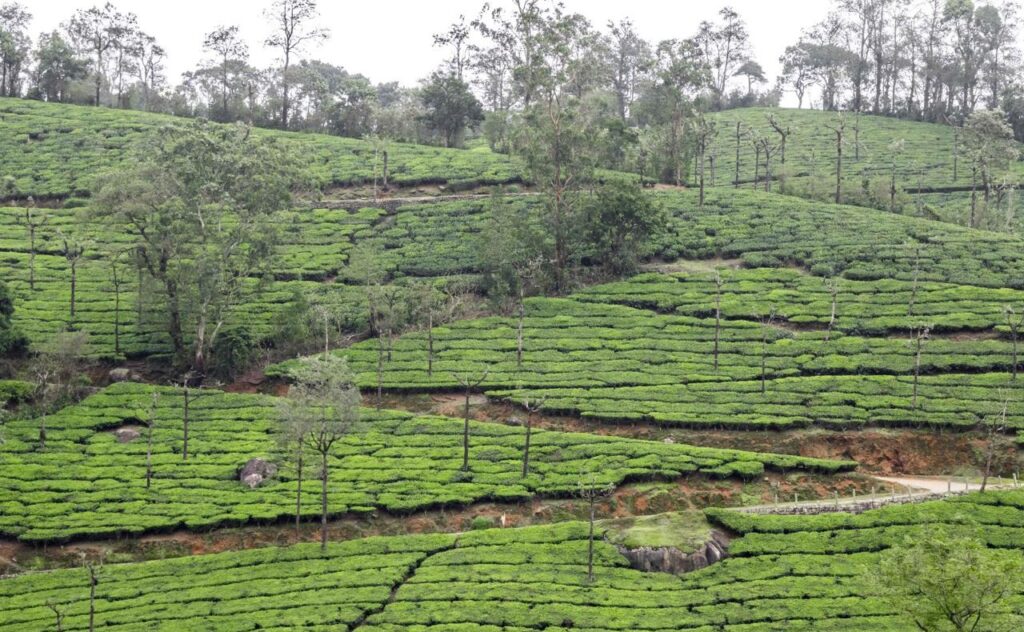
4. After studying the use of pesticides so extensively, do you still drink tea? If so, do you have a favourite type?
Yes—studying pesticides actually makes one more conscious, not fearful. I do enjoy tea, especially Assam Orthodox and Darjeeling first flush. I tend to choose tea from reputed gardens or produced by organic labels where traceability and quality assurance are better managed. The idea is not to abandon tea, but to support sustainable and safe practices within the industry.
5. What’s a common myth about pesticides that you’d like to debunk?
The myth that “Pesticide use is always bad.” In reality pesticides when used judiciously and as per scientific guidelines, play a vital role in crop protection and ensuring food security. The real issue is misuse, lack of awareness, and poor regulatory enforcement. Not all chemicals are equally toxic, and blanket bans can sometimes do more harm than good if safer alternatives aren't provided. The focus should be on awareness, enforcement of safe use, and providing growers with affordable bio- pesticides, pest-resistant clones, and training in non-chemical pest management practices.
6. How is Sankala’s research contributing to this issue?
Sankala’s study On Pesticide Residues in Tea leaves – Causes, Practices, and remedies for safe tea production by Small Tea Growers is examining the tea ecosystem and attempting to bridge the gap between grassroots challenges and institutional responses. To tackle the issue of pesticide residues holistically, Sankala has adopted a three-pronged strategy, supported by evidence, technology, and community partnerships. It aims to
- Bridge gaps in between Small Tea Growers, policymakers, and researchers in the area of adoption of Integrated Pest Management, adaptability to climate change and market dynamics.
- Developing localised IEC (Information, Education, Communication) campaigns to promote safe practices.
- Advocate policy reforms for sustained growth of Tea Industry with special reference to STGs.
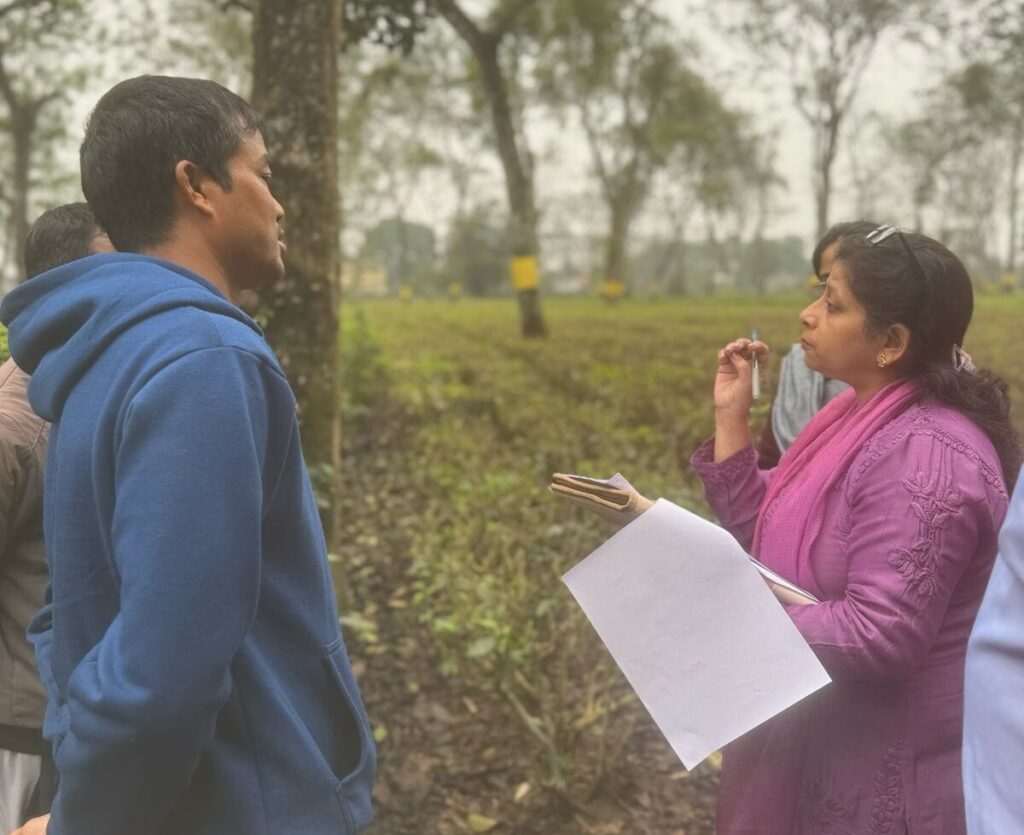
Dr Mahajan with Sankala team interacting with STGs in Assam
A Call for Conscious Consumption
As tea sustains millions of livelihoods and brings comfort to billions of drinkers worldwide, ensuring its safety must remain a shared priority. The overuse or misuse of pesticides threatens not just human health, but the integrity of the entire supply chain. Through smarter regulations, empowered farmers, informed consumers, and collaborative organizations like Sankala, we can uphold the purity of this ancient brew.
Every cup of tea carries a story—of culture, soil, climate, labour, and resilience. Ensuring that the story is one of health, not harm, is a responsibility shared by all. Because in every cup, there should be flavour, comfort, and tradition—not chemical risk.
Author
-

A communications consultant with more than 5 years of experience, Deepna is responsible for conceptualising communication strategies and crafting impactful collaterals. With a focus on Water, Sanitation, and Hygiene (WaSH), she has successfully organized multiple conferences at Sankala, enhancing dialogue and collaboration in the field. In addition to her organisational expertise, Deepna oversees social media communications, forging valuable digital partnerships and engaging in extensive outreach efforts to amplify their message and impact.
View all posts





